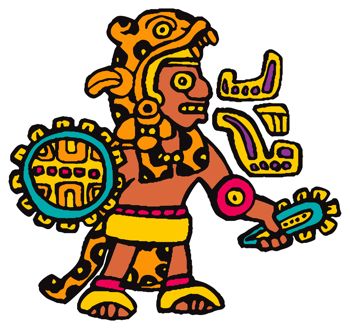A magazine where the digital world meets the real world.
On the web
- Home
- Browse by date
- Browse by topic
- Enter the maze
- Follow our blog
- Follow us on Twitter
- Resources for teachers
- Subscribe
In print
What is cs4fn?
- About us
- Contact us
- Partners
- Privacy and cookies
- Copyright and contributions
- Links to other fun sites
- Complete our questionnaire, give us feedback
Search:
Can a computer tell a good story?
by Rafael Pérez y Pérez of the Universidad Autónoma Metropolitana, México

What's your favourite story? Perhaps it's from a brilliant book you've read: a classic like Pride and Prejudice or maybe Twilight, His Dark Materials or a Percy Jackson story? Maybe it's a creepy tale you heard round a campfire, or a favourite bedtime story from when you were a toddler? Could your favourite story have actually been written by a machine?
Stories are important to people everywhere, whatever the culture. They aren't just for entertainment though. For millennia, people have used storytelling to pass on their ancestral wisdom. Religions use stories to explain things like how God created the world. Aesop used fables to teach moral lessons. Tales can even be used to teach computing! I even wrote a short story called 'A Godlike Heart' about a kidnapped princess to help my students understand things like bits.
It's clear that stories are important for humans. That's why scientists like me are studying how we create them. I use computers to help. Why? Because they give a way to model human experiences as programs and that includes storytelling. You can't open up a human's brain as they create a story to see how it's done. You can analyse in detail what happens inside a computer while it is generating one, though. This kind of 'computational modelling' gives a way to explore what is and isn't going on when humans do it.
So, how to create a program that writes a story? A first step is to look at theories of how humans do it. I started with a book by Open University Professor Mike Sharples. He suggests it's a continuous cycle between engagement and reflection. During engagement a storyteller links sequences of actions without thinking too much (a bit like daydreaming). During reflection they check what they have written so far, and if needed modify it. In doing so they create rules that limit what they can do during future rounds of engagement. According to him, stories emerge from a constant interplay between engagement and reflection.
With this in mind I wrote a program called MEXICA that generates stories about the ancient inhabitants of Mexico City (they are often wrongly called the Aztecs - their real name is the Mexicas). MEXICA simulates these engagement-reflection cycles. However, to write a program like this you need to solve lots of problems. For instance, what type of knowledge does the program need to create a story? It's more complicated than you might think. What knowledge would you need to write a story about the last football World Cup? You would need facts about Brazilian culture, the teams that played, the game's rules... Similarly, to write a story about the Mexicas you need to know about the ancient cultures of Mexico, their religion, their traditions, and so on. Figuring out the amount and type of knowledge that a system needs to generate a story is a key problem a computer scientist trying to develop a computerised storyteller needs to solve. Whatever the story you need to know something about human emotions. MEXICA uses its knowledge of them to keep track of the emotional links between the characters using them to decide sensible actions that then might follow.
By now you are probably wondering what MEXICA's stories look like. Here's an example:
Jaguar Knight made fun of and laughed at Trader. This situation made Trader really angry! Trader thoroughly observed Jaguar Knight. Then, Trader took a dagger, jumped towards Jaguar Knight and attacked Jaguar Knight. Jaguar Knight's state of mind was very volatile and without thinking about it Jaguar Knight charged against Trader. In a fast movement, Trader wounded Jaguar Knight. An intense haemorrhage aroused which weakened Jaguar Knight. Trader knew that Jaguar Knight could die and that Trader had to do something about it. Trader went in search of some medical plants and cured Jaguar Knight. As a result, Jaguar Knight was very grateful towards Trader. Jaguar Knight was emotionally tied to Trader but Jaguar Knight could not accept Trader's behaviour. What could Jaguar Knight do? Trader thought that Trader overreacted; so, Trader got angry with Trader. In this way, Trader - after consulting a Shaman - decided to exile Trader.
As you can see it isn't able to write stories as well as a human yet! The way it phrases things is a bit odd, like "Trader got angry with Trader" rather than "Trader got angry with himself". It's missing another area of knowledge: how to write English naturally! Even so, the narratives it produces are interesting and tell us something about what does and doesn't make a good story. And that's the point. Programs like MEXICA help us better understand the processes and knowledge needed to generate novel, interesting tales. If one day we create a program that can write stories as well as the best writers we will know we really do understand how humans do it. Your own favourite story might not be written by a machine, but in the future, you might find your grandchildren's favourite ones were!
If you like to write stories, then why not learn to program too then you could try writing a storytelling program yourself. Could you improve on MEXICA?


